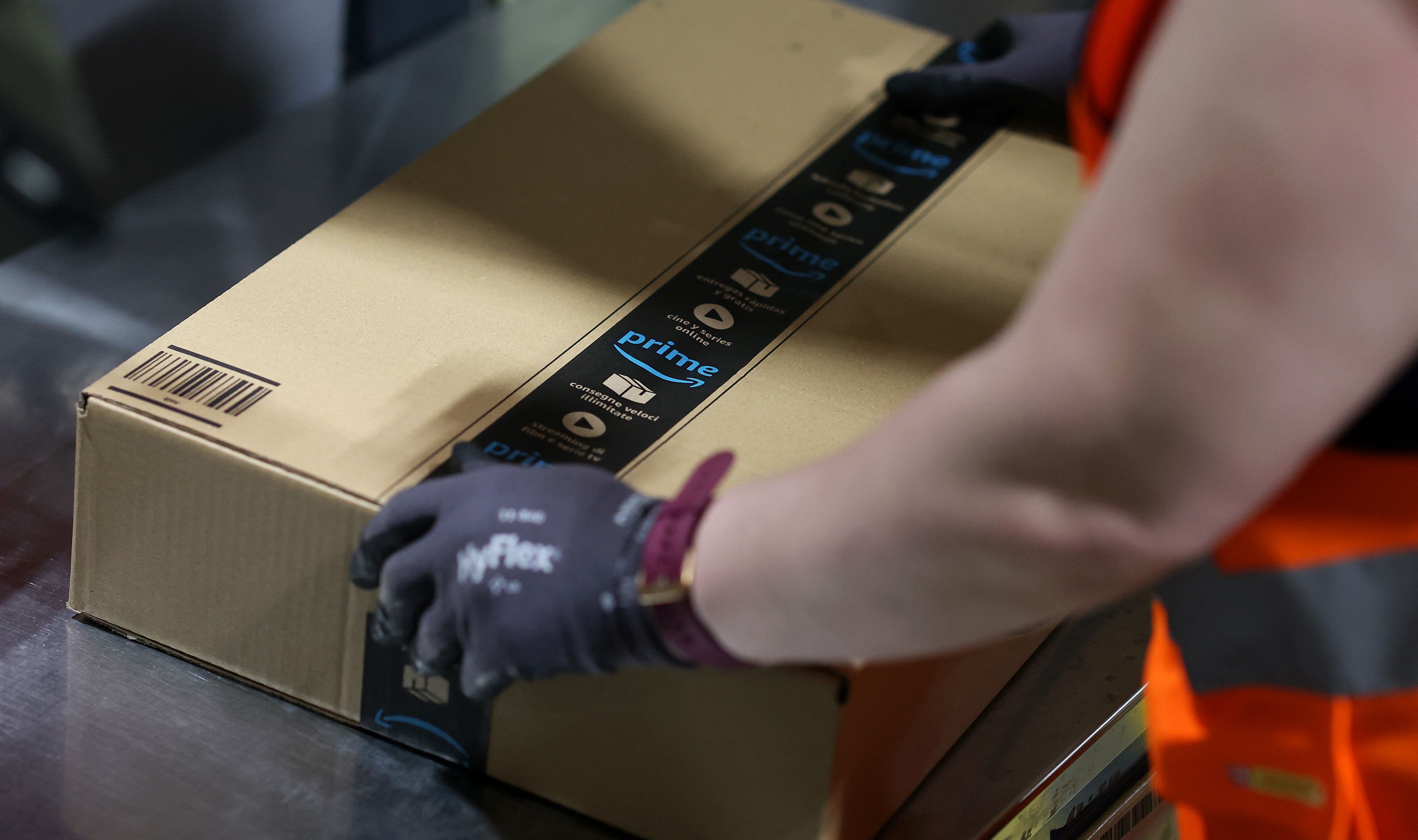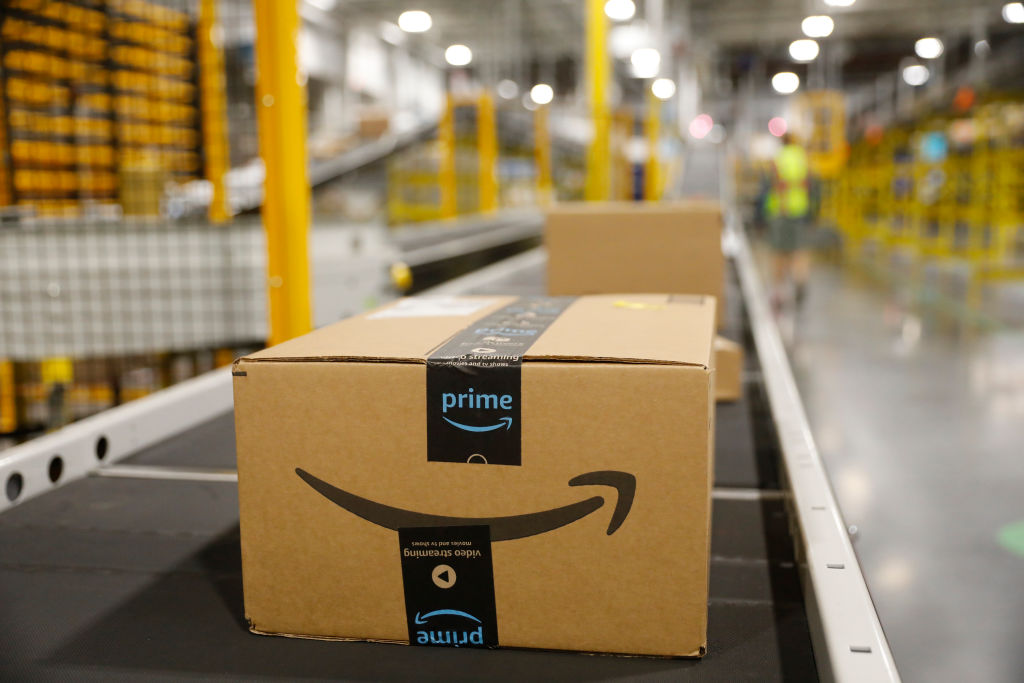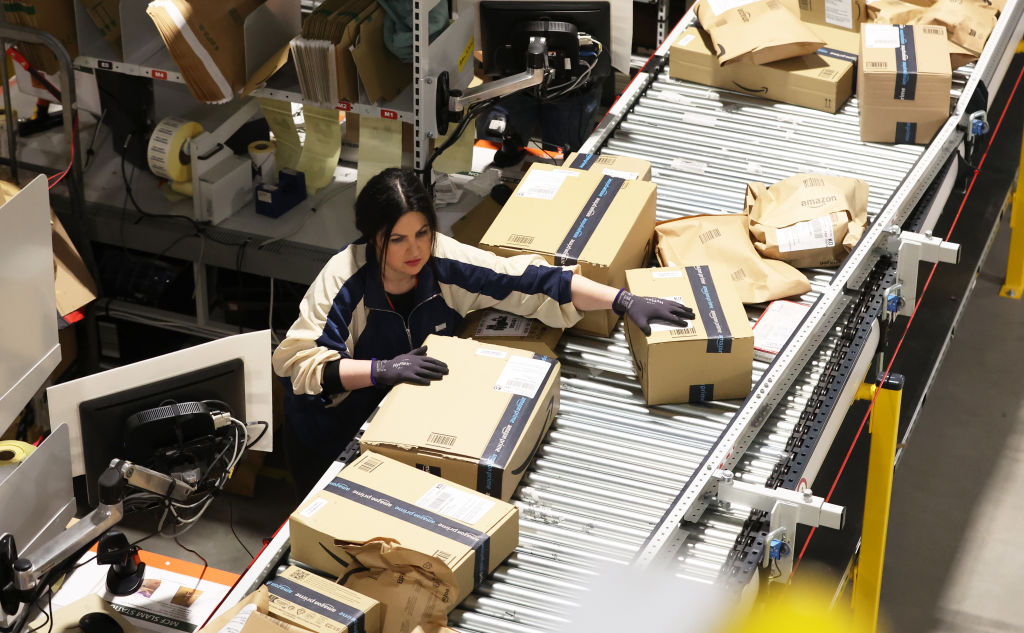Digital Resource Library

Visit the Amazon Workers Safety Proton Drive folder to download safety resources.
Articles










Guides
Reports
Delivering Precarity: How Amazon Flex Harms Workers and What to Do About It
National Employment Law Center, July 2025
Amazon, the largest online retailer in the United States for more than a decade, is poised to overtake Walmart to become the country’s top retailer, full stop. To meet the “fast, free shipping” promise at the heart of its strategy to achieve retail dominance, the corporation has built an army of contingent and subcontracted last-mile delivery workers. The most underpaid and precarious among them, making the speediest deliveries, are managed by Amazon’s Uber-like delivery platform called “Amazon Flex.”
This brief identifies key facets of the Amazon Flex labor model and discusses their negative impacts on job quality. It draws on Amazon’s own corporate filings, statements, and contracts, as well as government documents, press reports, research by academics, industry groups, and advocacy organizations, and conversations with Flex drivers organizing in New Jersey. It concludes by recommending organizing, policy, and legal interventions for improving the conditions of Flex drivers and a growing population of workers facing similar challenges on the job.
Failure to Deliver: Amazon Falls Short on Safety
Strategic Organizing Center, May 2025
Workers at Amazon facilities sustained more than 24,000 serious injuries in 2020, resulting in a serious injury rate nearly two times the non-Amazon warehousing and storage industry, the report released by the Strategic Organizing Center (SOC) shows.
The report, which analyzes new data submitted by Amazon to the U.S. Occupational Safety and Health Administration (OSHA), examines a four-year period through 2020, and shows that even as Amazon faced growing public scrutiny of its safety record, its workers were injured at substantially higher rates than non-Amazon workers in the same industries.
The "Injury-Productivity Trade-off": How Amazon’s Obsession with Speed Creates Uniquely Dangerous Warehouses
US Senate Health, Education, Labor & Pensions Committee, December 2024
Through its investigation, the Committee found extensive evidence of a corporate culture obsessed with speed and productivity. This culture, driven by relentless productivity demands, has resulted in systemic safety failures and high rates of injury. Amazon expects workers to move at unsafe rates and in unsafe conditions that cause workers to be injured far more frequently than they are at other warehouses. Workers told the Committee about Amazon regularly ignoring safety concerns, ordering workers to stay in roles that were causing them pain, denying workers needed medical care or pressuring them to return to work too soon, and refusing accommodations for work-related injuries as well as disabilities.
The Committee also uncovered evidence that Amazon is aware of the safety risks caused by the speed it demands of its workers. Amazon initiated a series of multi-year internal studies aimed at understanding how it can improve worker safety. But when those internal studies recommended efforts that might reduce workers’ pace—and potentially hurt the company’s bottom line—Amazon chose not to act on the studies’ findings. In short, the Committee’s investigation found that Amazon is not only aware of the connection between speed and injuries, but also that the company specifically rejected potential safety improvements, accepting injuries to its workers as the cost of doing business. Incredibly, while the company refuses to adopt those recommended safety improvements, it also presents a misleading narrative about its injury rates and claims its warehouses are far safer than they truly are.
Peak Seasons, Peak Injuries: Amazon Warehouses Are Especially Dangerous During Prime Day and the Holiday Season—and the Company Knows It
US Senate Health, Education, Labor & Pensions Committee, July 2024
This interim report sheds light on Amazon workers’ experiences during Prime Day and the holiday season. It also makes public, for the first time, the company’s internal data on warehouse injury rates, which reveal just how dangerous its warehouses are during peak seasons.
According to this internal data, during Prime Day 2019, Amazon’s rate of recordable injuries—the injuries Amazon is required to disclose to the Occupational Safety and Health Administration (OSHA)—was over 10 injuries per 100 workers. That rate is more than double the industry average.
But this number does not tell the full story. During that same period, Amazon’s total injury rate, which includes injuries Amazon is not required to disclose to OSHA, was just under 45 injuries per 100 workers. That is nearly half of the company’s warehouse workers. These injury rates are especially egregious in light of the incredible revenue the company generates and the resources it has available to make its warehouses safe for workers.
Same Day Injury: Amazon Fails to Deliver Safe Jobs
Strategic Organizing Center, May 2024
A new analysis shows that Amazon’s management has failed to deliver the safety improvements that it promised, and is nowhere near meeting its own injury reduction goals. In 2024, Amazon’s total injury rate was 80% higher than its target rate for 2025.
Drawing on newly released injury data Amazon itself submitted to the Occupational Safety and Health Administration (OSHA), the analysis reveals that Amazon’s injury rate remained alarmingly high in 2024 and has not meaningfully improved in recent years. SOC found that in 2024, the rate of serious injuries in Amazon’s warehouses was nearly double that of non-Amazon warehouses, highlighting that Amazon’s operations have continued to be much more dangerous for workers than the rest of the industry.
Amazon’s Outsized Role: The Injury Crisis in U.S. Warehouses and a Policy Roadmap to Protect Workers
National Employment Law Project, May 2024
The biggest warehouse employer, Amazon, is now the second largest private-sector employer in the U.S., relying heavily on Black workers—especially Black women—to power its operations. High injury rates at Amazon—which now represents 37 percent of all U.S. warehouse employment—have drawn scrutiny from both federal and state regulators. In this report, researchers from the National Employment Law Project, shed further light on the injury crisis facing warehouse workers and potential policy solutions by examining data from the Occupational Safety and Health Administration (OSHA) for employers with the largest warehouses in the U.S. and reviewing the current policy landscape on workplace protections for warehouse workers.
Pain Points: Data on Work Intensity, Monitoring, and Health at Amazon Warehouses
UIC Center for Urban Economic Development, October 2023
This report from the University of Illinois Chicago—the first in a series—focuses on work intensity, electronic monitoring, and health and safety at Amazon warehouses. The report details the results of a survey of 1,484 Amazon workers across 451 facilities in 42 states—the largest and most representative nationwide study of Amazon workers to date. The data show a widespread health toll that is connected to the monitoring and intensity of work at the company.
Disabling: How Amazon Fails Associates With Workplace Accommodations
United For Respect, July 2023
The workplace accommodations process at Amazon is broken. Across the country, disabled warehouse associates face multiple hurdles in receiving the type of reasonable accommodations that would allow them to perform their jobs safely and successfully. Contrary to the intent of the Americans with Disabilities Act, Amazon workers seeking accommodations must navigate excessive requests for paperwork and medical documentation, indefinite delays, departments that don’t communicate with one other, unfair treatment from managers, and more.
In Denial: Amazon’s Continuing Failure to Fix Its Injury Crisis
Strategic Organizing Center, April 2023
This analysis found that Amazon’s operations continue to be dramatically more dangerous for workers than the rest of the warehouse industry. In 2022, Amazon’s injury rate was 70 percent higher than the rate at non-Amazon warehouses, and its serious injury rate–6.6 per 100 workers—was more than double the rate at non-Amazon warehouses (3.2 per 100). Workers at Amazon facilities sustained nearly 39,000 injuries in 2022. And while Amazon employed 36 percent of all U.S. warehouse workers in 2022, the company was responsible for more than half (53 percent) of all serious injuries in the industry.
Extreme Heat at Amazon Air
Warehouse Worker Resource Center and KSBD Workers, September 2022
High temperatures and extreme heat are dangerous and life-threatening. These conditions at work, especially in a physically intensive work environment, are particularly dangerous. Over the summer, at least half a dozen workers documented heat illness at KSBD, Amazon’s West Coast Air Freight Fulfillment Center, and as temperatures soared into the 90s and 100s, the workers at KSBD formulated their demands and directly approached Amazon warehouse management on Aug. 31 and Sept. 2 to win protections from extreme heat. Then workers representing every department at the facility took thermometers to work for seven days and recorded the temperatures throughout the day. At one point, on Sept. 4, workers recorded a temperature of 121 degrees in an outdoor work area.
Warehousing Pain: Amazon Worker Injury Rate Skyrockets with Company's Rapid Expansion in NY State
New Yorkers for a Fair Economy, May 2022
An analysis based on Amazon’s self-reported data reveals that injury rates jumped 64 percent at the company’s warehouse and logistics facilities in New York State from 2020 to 202. Nationally, Amazon injury rates increased 20 percent during the same period. In late 2020, Amazon reinstituted electronic monitoring–based disciplinary policies that had been suspended at the beginning of the pandemic, driving up the pace of work and likely resulting in more worker injuries.Amazon’s 2021 total injury rate in New York is approximately equivalent to one injury for every 11 full-time workers.
The Injury Machine: How Amazon’s Production System Hurts Workers
Strategic Organizing Center, April 2022
An analysis of Amazon injury records shows that injury rates at its facilities increased by a staggering 20 percent from 2020 to 2021. The report finds Amazon warehouse workers were seriously injured at twice the rate of other warehouse employers at 6.8 per 100 workers, as compared to 3.3 per 100 for all other employers in the warehouse industry. A review of California-specific data shows that injury rates in California increased 30 percent, to a rate that was over 60% higher than the rate of injuries at other warehouse companies in the state.
Primed for Pain: Amazon’s Epidemic of Workplace Injuries
Strategic Organizing Center, May 2021
Workers at Amazon facilities sustained more than 24,000 serious injuries in 2020, resulting in a serious injury rate nearly two times the non-Amazon warehousing and storage industry, the report released by the Strategic Organizing Center (SOC) shows.
The report, which analyzes new data submitted by Amazon to the U.S. Occupational Safety and Health Administration (OSHA), examines a four-year period through 2020, and shows that even as Amazon faced growing public scrutiny of its safety record, its workers were injured at substantially higher rates than non-Amazon workers in the same industries.
The Public Health Crisis Hidden in Amazon Warehouses
Warehouse Worker Resource Center, January 2021
Amazon’s work quota and surveillance practices are causing a public health crisis for warehouse workers and delivery drivers—with grave impacts on worker health, safety, and well-being. To protect worker health and end this crisis, California policymakers and government agencies need to create and enforce workplace standards to protect workers’ safety. This includes ergonomic working conditions, stronger COVID-19 precautions, and an end to the work quota system at Amazon and throughout the warehousing industry.
Amazon’s Disposable Workers: High Injury and Turnover Rates at Fulfillment Centers in California
National Employment Law Project, March 2020
Amazon has repeatedly touted its commitment to providing quality jobs, but a growing body of evidence on injuries and turnover at their facilities tells a different story. Amazon workers around the country have reported being subject to unsustainably fast productivity requirements resulting in injury and exhaustion. Workers describe pushing their bodies to the brink to avoid automatic termination for missing quotas. Data from the company’s own records have confirmed their accounts showing that Amazon warehouses have stunningly high injury rates.
High turnover is the norm at Amazon facilities. Our analysis of California county-level census data shows that when Amazon opens a fulfillment center, warehouse worker turnover in that county skyrockets. Counties hosting Amazon fulfillment centers have turnover rates that are much higher than the average rate of turnover for warehouse workers in California and workers in other industries overall in the state.












